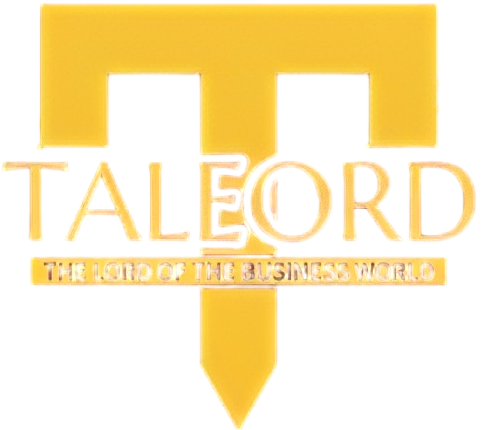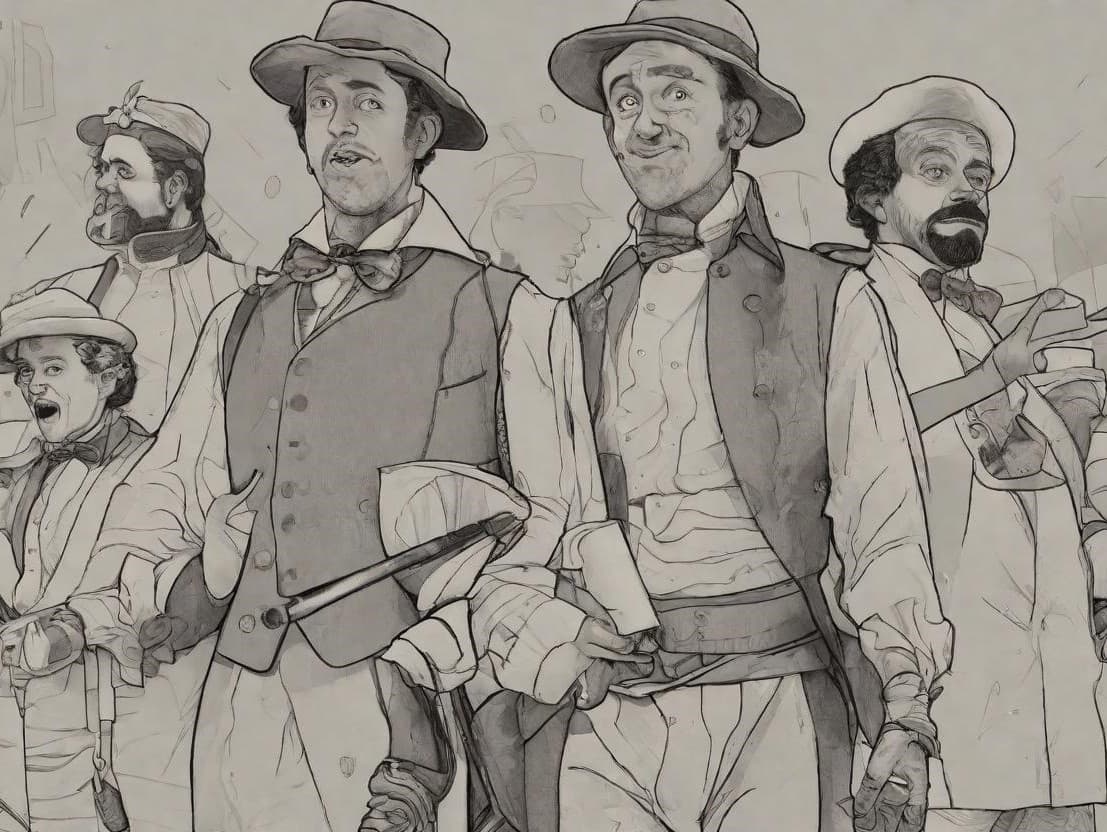Have you ever found yourself instantly recognizing a familiar type of persona in a story? That’s the magic of a stock character. Through my exploration of the captivating world of storytelling, I’ve discovered that these characters are not just commonplace figures; they’re imbued with a universal character essence, making them instantly identifiable across cultures and narrative platforms. Whether they’re playing on stereotypes or standing in as classical archetypes, stock characters serve a critical narrative purpose. Join me as we uncover how these characters resonate with audiences and lend a helping hand in steering plots within both literature and media.
Key Takeaways
- Stock characters are universally recognized figures that serve a narrative purpose in storytelling.
- These characters often embody stereotypes or archetypes that are entrenched in cultural narratives.
- Their presence in a story aids in immediate audience connection due to their familiar traits.
- Stock characters function as tools to advance the plot and underscore thematic elements.
- They can significantly shape a narrative’s direction and pacing through their conventional roles.
- Understanding stock characters enhances our appreciation of storytelling traditions and innovations.
Definition of Stock Characters in Storytelling
When we dive into the heart of storytelling, we encounter various recognizable figures, commonly known as stock characters. These characters serve a specific narrative purpose rooted in tradition and are marked by familiar traits that audiences have come to expect. Let’s peel back the layers and truly understand these conventional personas that have withstood the test of time in narrative arts.
Unveiling the Concept of a Stock Character
At its most fundamental level, the definition of a stock character is a typical figure seen recurrently in various forms of storytelling. From folktales to blockbuster movies, these characters embody certain fixed traits that immediately convey to the audience the role they will play in the narrative. Renowned playwrights and authors have leaned on these character archetypes not only for their reliability to convey certain messages quickly but also for their ability to serve as a sturdy scaffold on which a story can be constructed.
Distinct Features of Stock Characters
So, what makes a stock character stand out? They are generally crafted with exaggerated, simplified attributes that epitomize a specific human trait or social role, morphing into what we often term as stereotypical characters. Whether it be the sly trickster, the nurturing mother figure, or the unyielding hero, these traditional characters perform specific functions in storytelling. Here are some of their distinguishing traits:
| Characteristic | Description | Function in Storytelling |
|---|---|---|
| Exaggerated Traits | Often possessing one-dimensional personalities with definitive, overemphasized qualities. | To rapidly establish the character’s purpose and relationship to the narrative. |
| Instant Recognizability | Immediately identifiable by audiences due to well-known attributes and behaviors. | To create a quick and familiar connection, often evoking certain expectations. |
| Symbolic Function | They often symbolize a particular idea, value, or aspect of society. | To communicate broader themes and societal commentary through familiar figures. |
| Consistency Across Media | Able to transcend different forms of media while maintaining their core essence. | To uphold narrative traditions and easily adapt stories to various media formats. |
Although these conventional personas can sometimes be critiqued for lacking depth, their presence in storytelling is undeniably powerful. By anchoring a tale with these familiar figures, storytellers can navigate the complex web of narrative with ease, guiding audiences through new worlds with well-known signposts. In my exploration of stories, recognizing these stock characters has provided a comforting sense of familiarity amidst the suspense of unfolding plots.
Types of Stock Characters Across Genres

When I explore the vast landscapes of literature and film, I’m greeted by a familiar cast of characters whose roles are pivotal to the stories they inhabit. These are the literary archetypes and character types that, while often grounded in convention, bring color and life to every narrative. Their dramatic role in any given work can’t be understated—they are the foundations upon which the genre itself is built.
Heroes and Villains: Classic Examples
In my journey across genres, I encounter the quintessential hero, whose courage and virtue illuminate the path of the narrative. Juxtaposed to this beacon of hope is the villain, a character crafted to challenge, obstruct, and compel the protagonist towards their destiny. The hero’s resilient quest against the often formidable villain is a tale as old as storytelling itself, reflecting the perpetual conflict between good and evil.
From Comedy to Tragedy: A Spectrum of Archetypes
A foray into comedy introduces me to the stock figure of the bumbling fool, a source of both sympathy and laughter, whose misadventures drive the plot amidst chaos and amusement. Conversely, the tragedy genre unveils the tragic hero—a paragon of flaw and fate—destined for downfall, evoking empathy and contemplation. This spectrum of archetypes across comedy and tragedy showcases the adaptability and significance of stock characters. They are essential cogs in the machinery of genre, ensuring that each story resonates with its intended emotional and thematic impact.
The Role of Stock Characters in Plot Development
In my journey as a writer and storyteller, I’ve come to appreciate the seamless narrative purpose stock characters serve in plot development. As we peel back the layers of storytelling techniques, it becomes clear that these common characters are not mere placeholders, but rather catalysts for advancing the narrative. Let’s delve into how these familiar figures fulfill their roles in the grand schema of storytelling.
Advancing the Narrative with Familiar Figures
When it comes to storytelling, efficient plot development is key. Stock characters, with their inherent familiarity, provide no-nonsense narrative shortcuts that drive the story forward. Often, they embody traits that are instantly recognizable to the audience, which allows me to bypass lengthy character introductions and jump straight into the action or drama of the unfolding plot. It’s akin to meeting an old friend in a new city; no introductions needed, you’re ready to explore together.
| Stock Character Role | Function in Plot Development | Impact on Audience Expectation |
|---|---|---|
| The Wise Mentor | Guides the protagonist, provides key knowledge | Cultivates a sense of trust and anticipation for growth |
| The Villainous Tyrant | Serves as the opposition, propels conflict | Instills tension, ups the stakes |
| The Comic Relief | Diffuses tension, offers breather between intense scenes | Facilitates a balanced emotional journey |
| The Loyal Companion | Supports the hero, aids in crucial moments | Encourages camaraderie, reinforces the protagonist’s cause |
By harnessing these conventional personas for their proven narrative purpose, I’m able to craft a story that resonates with the audience. These stock characters are more than mere cogs in the storytelling machine—they are the beating heart that pumps vitality into the tale, often reaffirming or subverting customary roles in unexpected ways to captivate readers and viewers alike.
Examples of Stock Characters in Literature and Media
Throughout my exploration of the rich tapestry of stories that make up our cultural heritage, I’ve encountered countless stock character examples that have withstood the test of time. These timeless characters have a special place both in classic literature and in the dynamic world of modern media. Today, I want to share with you how these archetypes continue to capture our imagination and remain relevant across various storytelling platforms.
Timeless Characters in Classic Novels
Consider the wise old mentor, a staple in classic literature. This fictional character, offering guidance to the protagonist, can be seen in figures like Merlin from the Arthurian legends. Their wisdom and patience are qualities that have been inspiring readers for generations. Similarly, the brash young adventurer is embodied in characters such as Mark Twain’s Tom Sawyer, whose boldness and insatiable curiosity speak to the youthful spirit in all of us.
Identifying Stock Figures in Modern Media
In today’s modern media landscape, these archetypes have not faded; rather, they have been reimagined to fit contemporary narratives. The wise old mentor is mirrored in characters like Gandalf from J.R.R. Tolkien’s Middle-earth legendarium, continuing to influence new heroes on their epic journeys. Meanwhile, the adventurous spirit of Tom Sawyer finds its echo in modern protagonists like Katniss Everdeen from “The Hunger Games,” who defies oppressive systems with her daring nature. These stock figures prove that no matter how much time passes, some characters remain eternally compelling.
The Purpose of Using Stock Characters in Fiction

The utility of stock characters in fiction extends far beyond mere convenience. As a seasoned writer, I’ve come to appreciate their multifaceted purpose in the literary world. Far from being mere placeholders, these characters act as vessels of narrative tradition and fulfill distinct roles in literature, all while aligning with time-honored storytelling conventions.
One of the primary justifications for employing stock characters is their ability to streamline the narrative process. Rapid pacing is essential in many forms of storytelling, and the use of well-known character types allows readers or viewers to quickly grasp the underlying premises and interpersonal dynamics without the need for lengthy exposition. Let’s explore their roles and effectiveness in driving a story forward:
- Anchor Points in Narrative: They provide familiar starting points for audiences to engage with the plot.
- Symbolic Shortcuts: Stock characters often symbolize key themes or societal roles, enabling swift conveyance of complex ideas.
- Foundations for Development: They offer a template upon which more complex characters can be built or contrasted against.
A closer look at their narrative significance can be illustrated through a basic table:
| Stock Character Role | Purpose in Fiction | Impact on Audience |
|---|---|---|
| The Mentor | Guiding protagonist’s journey | Instills trust and anticipation for growth |
| The Villain | Introducing conflict and challenge | Evokes tension and builds stakes |
| The Sidekick | Offering support and relatability | Provides humor and human warmth |
| The Femme Fatale | Adding mystery and complexity | Stirs intrigue and captivates attention |
As we dissect these roles, we witness the undeniable value stock characters bring to our literary creations. They are not mere lazy tropes but are, in fact, invaluable tools that serve to connect an audience to the narrative swiftly, while also honoring the rich tapestry of narrative tradition.
Characteristics of Stock Characters versus Dynamic Characters
As we delve deeper into the realm of character creation, it’s essential to draw distinctions between the various kinds of personalities that adorn the pages of our favorite stories. Each type of character, be it stock, flat, round, static, or dynamic, serves a unique purpose in storytelling, guiding audiences through the narrative labyrinth with familiar cues or surprising depth.
Comparing Flat and Round Characters
Flat characters, akin to stock characters, typically showcase a singular trait or personality aspect. They’re not the complex individuals with whom you’d unravel layers of motivations and backstory. Instead, they’re the trusty archetypes that stride across our narratives, often unchanged by the tumults of the plot. The friendly innkeeper, the stern police officer, these are the flat characters we recognize instantly.
On the other hand, round characters are the darlings of literary complexity. These are dynamic individuals, with a myriad of characteristics that are revealed gradually. They often surprise us with their depth, changing over time, and compelling us to invest emotionally in their journeys. These are not your stock heroes or villains; these are the conflicted souls whose internal dilemmas are as engaging as their external adventures.
Understanding Static Character vs Stock Character
Now, while the terms static and stock might seem interchangeable at a fleeting glance, they inhabit distinct roles within character development. A static character remains largely the same throughout the narrative arc. The world may shift, events may sway, but these characters retain their core despite the cascade of changes around them. It’s worth noting that static characters can be round or flat; they could be multifaceted individuals who simply remain true to their essence from start to finish.
Stock characters, however, are more than just immobile fixtures in the story. They are the embodiments of certain types or tropes that the audience immediately identifies due to their repeated appearances across narratives and cultural contexts. These characters are typically flat, but their predictability is what cements their importance in the rapid establishment of the setting or plot progression.
In my ventures through storytelling, I’ve come to appreciate both for what they offer. Whether it’s the comforting recurrence of a stock character or the intriguing constancy of a static personality amidst a whirlwind plot, each character type has its charm and utility within the grand tapestry of a narrative.
Origins of Stock Characters in Narrative Tradition
As I dive into the origins of stock characters, it’s clear that these fixtures in storytelling are as ancient as the art itself. From the outset, these characters have been instrumental in shaping the narrative tradition, reflecting society’s ideals and shortcomings, humor, and tragedies. Their existence is an integral part of our collective cultural footprint, and as I explore this topic, I’m transported back to the days of ancient drama, where the groundwork for many of the literary stereotypes we recognize today was first established.
Cultural Footprints in Character Archetypes
The archetypes carved by stock characters in the bedrock of literature poignantly map the changes in societal norms and beliefs. Each era’s prevailing values and cultural circumstances have left an indelible impression on these characters, cementing their role in not just entertaining, but also in preserving history through narrative expression.
Literary Stereotypes from Ancient Drama to Contemporary Fiction
The journey from masks worn by Grecian actors to modern-day character tropes spans centuries of innovation and tradition. It highlights a fascinating evolution: the literary stereotypes that have continuously adapted to fit the contours of contemporary life, while also holding fast to the essential human qualities that first breathed life into them on ancient stages.
| Time Period | Ancient Archetype | Modern Counterpart | Significance |
|---|---|---|---|
| Classical Antiquity | Confidant | Best Friend in Rom-Coms | Unwavering support and comic relief |
| Medieval Period | Fool | Clown in Circus Acts | A source of wisdom under the guise of folly |
| Renaissance | Tragic Hero | Flawed Protagonist in Dramas | Embodiment of hubris leading to downfall |
| Victorian Era | Governess | Tough-love Mentor | Guidance with strict undertones |
| Modern Day | Silent Observer | Everyday Man in Suspense Novels | The seemingly uninvolved who plays a pivotal role |
In examining these enduring types within the expanse of narrative history, it’s remarkable to see how the cultural footprint of each epoch shapes and redefines stock characters for subsequent generations. These characters, grounded deeply in the human psyche, are the bearers of traditions and the mirrors of ever-shifting cultural landscapes. They prove, unequivocally, that whether on the ancient amphitheater or the modern screen, our stories are, at their core, reflections of us—all woven into the broad narrative tradition.
Relationship Between Stock Characters and Stereotypes

As I ponder the essence of storytelling, it becomes evident that the line demarcating archetypes and stereotypes is remarkably fine and often blurred. Archetypes are quintessential examples of specific personas or behaviors, whereas stereotypes can unfortunately distill these broad strokes into oversimplified and sometimes offensive caricatures. Within the realm of literature and media, this distinction is critical as it influences not only how characters are perceived but also how audiences are shaped by these portrayals.
The Thin Line between Archetype and Stereotype
The journey from archetype to stereotype can be subtle, making vigilance essential in narrative creation. While the former serves as a universal model—an original draft from which characters are drawn—the latter can inadvertently perpetuate narrow-minded views when overused or employed without thought.
Addressing Racial and Social Stereotypes in Fiction
In addressing characters in fiction, it’s imperative that we understand the weight of racial and social stereotypes. The responsibility that comes with wielding a pen is tremendous, as what begins as an archetype can transform into a problematic stereotype if infused with cultural bias or ignorance. Reflecting on literary stereotypes, it’s not merely a writer’s prerogative to construct worlds and those who inhabit them, but a duty to ensure they do so with a conscientious pen, fostering inclusivity and avoiding the perpetuation of prejudice.
Common Stock Character Archetypes and Their Traits
In the universe of storytelling, certain characters resonate with us, time and again, through the tapestry of narratives we encounter. As I delve into the world of common stock character archetypes, I’ll focus on those who often serve as the bedrock of many stories: the loyal sidekick and the wise mentor. These archetypes come packed with character traits that are not only instantly recognizable but also establish an immediate connection with audiences across various forms of media.
The Loyal Sidekick
If there’s one archetype that embodies unwavering support, it’s the loyal sidekick. Their devotion to the protagonist is without question, oft providing comic relief, strategic aid, or a listening ear. The sidekick’s character traits include dependability, courage, and often a dose of humility – they shine in their role without overtaking the spotlight.
The Wise Mentor: Guiding the Protagonist
On the flank opposite the sidekick stands the wise mentor, that seasoned figure who imparts knowledge, instills confidence, and ultimately, steers the protagonist toward their destiny. Such mentors are marked by their sagacity, patience, and an air of mystery that draws both the hero and the audience toward them.
| Archetype | Key Traits | Purpose | Iconic Example |
|---|---|---|---|
| Loyal Sidekick | Dependability, Humor, Supportiveness | To provide assistance and emotional support to the protagonist | Samwise Gamgee from “The Lord of the Rings” |
| Wise Mentor | Wisdom, Patience, Mysteriousness | To guide and advise the protagonist on their journey | Obi-Wan Kenobi from “Star Wars” |
These profiles, the loyal sidekick and the wise mentor, continue to be foundational to storytelling because they fulfill roles we instinctively understand and value within our social narratives. By exploring the depths of their personality and the functions they serve in the narratives they inhabit, I unearth the core reasons why they remain cherished and critical to the fabric of storytelling.
What Is a Stock Character: Defining the Archetypical Roles
Throughout this exploration of narrative constructs, I’ve introduced you to a range of archetypical roles you’ve likely encountered countless times—the stock characters. These are the familiar figures, the conventional personas representing specific stereotypes in storytelling with distinct, immediately recognizable attributes. They serve a standard role within a narrative, providing a shortcut for writers to convey complex ideas without extensive character development.
Let’s revisit the definition of a stock character. These are the characters crafted on the anvils of storytelling tradition, each a template with predefined qualities. They fit effortlessly into the fabric of a story due to their established natures, whether it be the cunning trickster, the innocent damsel, or the ruthless tyrant. These archetypes span across cultures and time, arising from the shared human experience, and as such, serve to connect audiences with the narrative in a universally comprehensible manner.
As we dive deeper into the concept of an archetype stock character, we see these roles were born out of a necessity to reflect societal norms and human behaviors in literature and drama. The standard role each character upholds is like a familiar friend—or foe—that comforts or challenges the audience’s expectations. Their conventional nature is not a limitation but a device utilized to navigate stories through complex emotional landscapes with grace and swiftness.
Now, the portrayal of these characters may vary in complexity. The conventional persona might only exist to emphasize a single trait or serve as a foil to a more dynamic main character; however, the importance of their existence is paramount. They are the gears that keep the narrative machine well-oiled and moving towards a satisfying conclusion.
- Archetypal Role: The steadfast guardian whose unwavering loyalty underscores the protagonist’s resolve.
- Conventional Trait: The comic relief whose predictable antics provide levity amidst tension.
- Standard Function: The wise sage whose knowledge propels the hero towards their destiny.
In essence, understanding stock characters is to appreciate their craftsmanship. These archetypes embody the predictability and comfort necessary in a narrative for audiences to engage, relate, and ultimately, remain captivated.
Analyzing the Impact of Stock Characters on Storytelling

The narrative landscape is peppered with stock characters, those tried-and-true personas that readers and viewers alike have grown to recognize instantly. From the dashing rogue to the sage mentor, these characters often serve as the backbone of storytelling, providing a framework that supports the plot and engages the audience. But what is it about these character types that hold such sway over our collective imagination? Let’s dive into the impact of stock characters on storytelling and how they succeed in drawing us into their world.
How Familiar Roles Enhance Audience Engagement
There’s a certain magic that unfolds when an audience meets a stock character. It’s the spark of recognition, a feeling of familiarity that engages us from the outset. These archetypal figures—be they the mischievous trickster or the stoic hero—tap into our shared cultural narratives, acting as a bridge between the story and our own experiences. The audience engagement peaks because we’re not just observing the characters; we’re participating with them, predicting their moves, and learning through their archetypal journeys.
The Significance of Predictability in Storytelling
Some argue that predictability is the nemesis of creativity. However, when it comes to storytelling, predictability can serve a narrative purpose. It grounds the audience in the story’s universe, allowing the plot to unfold with a sense of rhythm and expectation. Indeed, the predictability of stock characters creates a comfort zone from which the storyteller can launch unexpected twists, elevating the tale to new heights. By striking a balance between the known and the unknown, writers wield stock characters as tools to enrich their stories, subtly guiding the audience through the narrative landscape.
“Stock characters are the archetypes through which we navigate the surging seas of narrative. They are not mere clichés but beacons that light the way for both storyteller and audience alike.”
Stock Characters in Theater and Film: A Historical Perspective
The journey of stock characters in theater and film offers a rich tapestry that traces the remarkable evolution of these enduring figures. From the bold and brash heroes of ancient Greek plays to the witty sidekicks and brooding villains of today’s blockbusters, these characters have held audiences captive across millennia. Let’s take a step back in a historical journey and see how the standard bearers of dramatic roles have transitioned from the stage to the silver screen.
The Evolution from Stage to Screen
My fascination with the dramatic arts began when I first discovered the works of Shakespeare, and with it, the timeless stock characters like the fool and the star-crossed lovers that inhabited his world. As I delved deeper into history, I discovered that many of these characters had origins in commedia dell’arte and even older theatrical traditions. Now, as I observe modern theater and film, I witness the remarkable transformation these figures have undergone, adapting new nuances to stay relevant in an ever-changing cultural landscape.
Dramatic Roles: A Look into Different Mediums
In my exploration of stock characters across different artistic mediums, I’ve noticed that while the platforms for storytelling have expanded and shifted, the core essence of these characters often remains unchanged. They serve familiar narrative functions, providing audiences with a sense of continuity and comfort, even as the mediums evolve. Below, you’ll find an outline presenting a brief comparison of stock characters within traditional theater and contemporary film.
| Theatrical Medium | Film Medium | Character Evolution | Notable Examples |
|---|---|---|---|
| Ancient Greek Theater | Classic Hollywood Cinema | Amplified personalities to fit the grand scale | Oedipus, Scarlett O’Hara |
| Commedia dell’arte | Modern Comedy Films | Adapted archetypes into relatable, contemporary figures | Arlecchino, Ace Ventura |
| Shakespearean Drama | Epic Film Narratives | Maintained poetic attributes while grounding in realistic settings | Hamlet, Michael Corleone |
| Musical Theater | Film Musicals | Preservation of the ‘larger than life’ approach with enhanced visual storytelling | Maria (The Sound of Music), Elle Woods (Legally Blonde) |
As we’ve seen, stock characters have not only survived the transition from stage to screen but have thrived, revealing the persistent power these archetypes hold in shaping the narratives of theater and film. In my analysis, their historical perspective highlights not only their evolution but also the timeless nature of storytelling itself.
We also have a great article on What Is A Subgenre that you might like to check out

Conclusion
In the many pages we’ve turned and stories we’ve immersed ourselves within, the significance of stock characters has been a constant companion, shaping our understanding of narrative and enriching our experiences of story. Through my examination of these ever-present figures, I came to appreciate their role as static characters, whose predictable nature helps to anchor the audience’s expectations and provides a familiar touchstone amidst the unfolding drama.
As we delved deeper, we recognized that these characters are far more than mere placeholders; they are potent symbols within the narrative convention, acting as keystones in the architecture of storytelling itself. In unpacking the characteristics and persistence of the character archetype, it becomes clear that stock characters are not just fixtures but are integral in advancing plotlines and enhancing audience connection.
My reflection on this topic reaffirms the timeless allure of these character archetypes. Their continued presence in modern narratives attests to their profound impact on both storytelling and the collective psyche. As writers and readers, we remain intertwined with these characters, hinting at a shared, enduring human experience that remains alive in the tales we treasure and the new stories we’re yet to tell.
We also have interesting and useful content like this article on our website that you will definitely be interested in viewing
FAQ
What is a stock character in literature and media?
A stock character is a familiar type that audiences immediately recognize, often representing exaggerated or simplified traits. They are universal characters that appear repeatedly in various stories and serve a specific narrative purpose within literature and media.
Can you provide a clear definition of a stock character?
A stock character is a stereotypical personage who represents a specific archetype or societal role in storytelling. These characters are conventional personas that recur across different stories and genres, providing a shortcut to understanding plot and character dynamics.
What are some common types of stock characters?
Some common types of stock characters include the noble hero, the wicked villain, the wise mentor, the foolish sidekick, the damsel in distress, and the tough-talking detective. These character types are found across a spectrum of genres from comedy to tragedy.
How do stock characters contribute to plot development?
Stock characters often advance the narrative by embodying certain roles or traits that the audience instantly identifies with, thus allowing the story to move forward without the need for extensive character development. They can fulfill and even subvert traditional roles to engage the audience and drive the plot.
Can you give examples of stock characters in modern media?
Modern media is rife with stock characters. From the best friend who provides comic relief in sitcoms to the tough-as-nails police chief in crime dramas, these figures continue to play significant roles in contemporary storytelling across television, film, and digital platforms.
What purpose do stock characters serve in fiction?
Stock characters serve multiple purposes in fiction. They help expedite storytelling, establish narrative pacing, and provide a familiar touchstone for the audience. Stock characters also lay the groundwork upon which more complex characters and plotlines can develop.
How are stock characters different from dynamic characters?
Stock characters are typically flat or static, exhibiting a consistent set of characteristics throughout a story, whereas dynamic characters are more complex and undergo significant personal development or change. Dynamic characters are the round figures of a narrative, offering depth and growth that stock characters generally lack.
Where do stock characters originate from?
Stock characters have their origins in the ancient traditions of drama and storytelling, reflecting the social and cultural stereotypes of their eras. Their footprints can be traced back to classical Greek and Roman plays, commedia dell’arte, and the works of authors such as Shakespeare.
What is the relationship between stock characters and stereotypes?
Stock characters are often based on archetypes, which can slip into stereotypes if handled carelessly. They are simplified representations that can reinforce social or racial stereotypes. Aware of this, contemporary writers are challenged to use stock characters thoughtfully to avoid perpetuating harmful generalizations.
What are some examples of stock character archetypes and their traits?
The loyal sidekick archetype often displays traits of unwavering support and comic relief, while the wise mentor is characterized by their knowledge, guidance, and moral support to the protagonist. These traits help the audience quickly grasp their roles in the narrative.
How do stock characters enhance audience engagement?
Stock characters enhance audience engagement by offering a sense of familiarity and comfort. Their predictability allows the audience to quickly understand their function in the story, creating a scaffold on which more intricate narratives can be built. They also provide opportunities for plot twists when used in unconventional ways.
How have stock characters evolved from theater to film?
From their theatrical origins to cinematic adaptations, stock characters have evolved to fit the changing mediums and societal contexts. While their core characteristics often remain the same, the ways in which they are portrayed have adapted to the visual nuances of film and the expansion of storytelling techniques in modern media.

